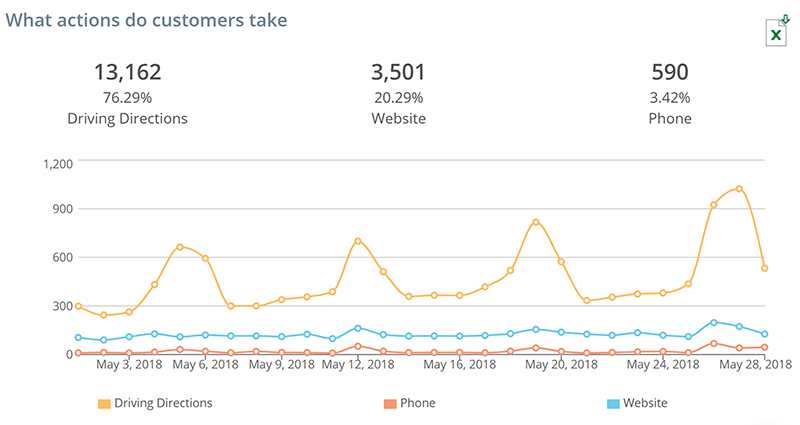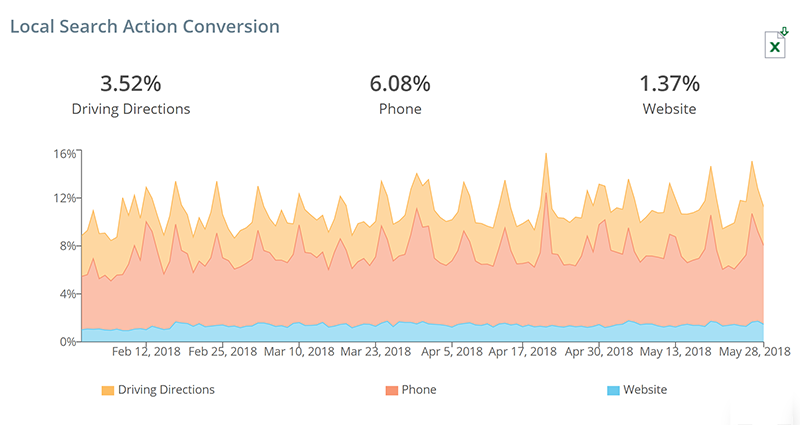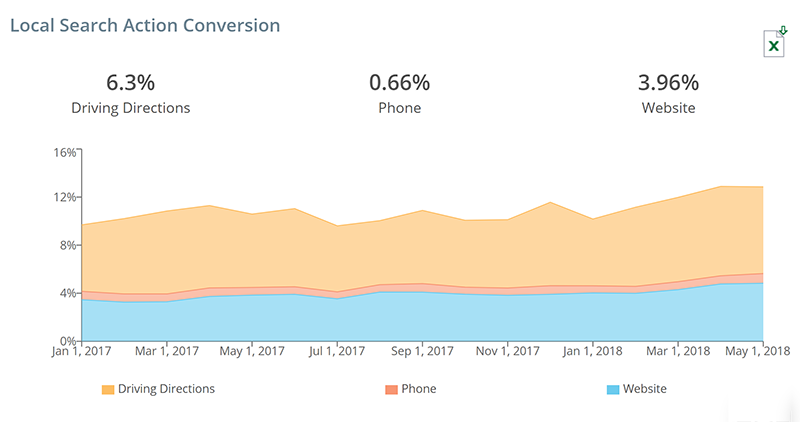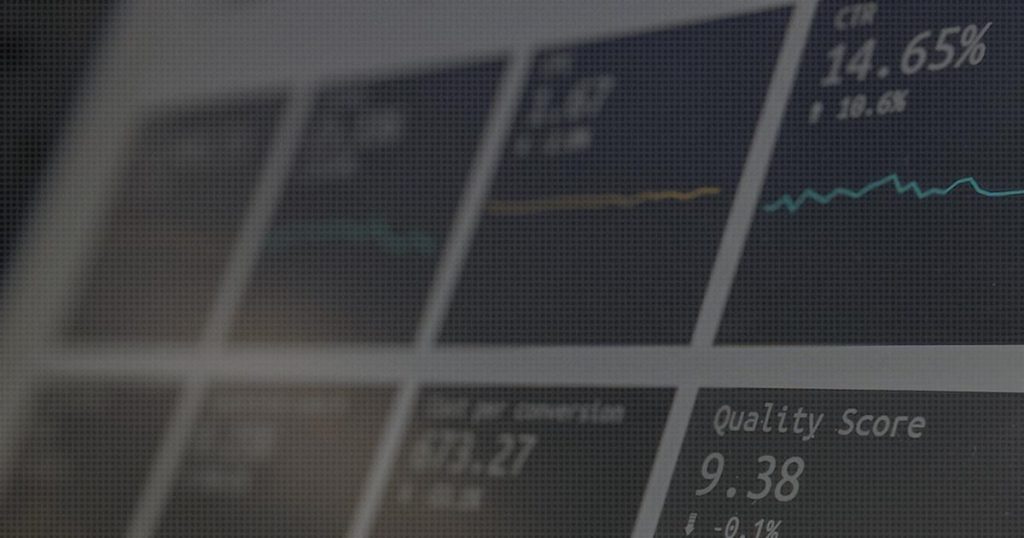The Google Local Knowledge Panel is rapidly evolving to become the primary source of company content exposed to most searches. Google continues to add functionality (address, phone, hours, reviews, popular times wait times, services, menus, ordering, leads, Q&A, descriptions, etc) and devote additional real estate for desktop and mobile searches.
Managing this content, in both substance and style, is becoming one of the most important tasks for all businesses. Everything from pizza chains to dentists, from car dealers to yoga studios, and form drug store chains to funeral homes – they all rely on the Google Knowledge panel to acquire new customers and to provide current customers with critical details.
So, how is your panel doing at converting searches into actions? Do you know?
The KPI of Local Conversion Rate (LCR)
Just like all conversion ratios, this one is built on the idea of desired actions/events divided by opportunities. For ecommerce websites, it is can be expressed in orders (actions) divided by site visitors (opportunities). For SEO, it is the click thru rate from the search result.
For a local search result, there are three positive, desirable actions.
- Phone Calls
- Website Visits
- Driving Directions
By adding up all three actions and then dividing this sum by the number of searches showing the result (impressions) you have a measure of each business’ ability to capture engagement from their “Google business card”.

LCR will vary by Business and Location
Just as with all other types of conversion rates, a tremendous amount of variability is expected based on the relationship searchers have with the business. Brands that receive a significant portion of their exposure from direct searches (e.g., “Joe’s Pizzeria on Main street”) will see much higher local conversion rate than searches for generic solutions (e.g., “a good pediatric dentist”).
Even within the same business, there is significant variability in direct versus discover searches, and therefore the expected LCR. For example, a unit of a national hardware store chain might be one of dozens in a metropolitan area. The population density drives up the volume of searches, but the competition limits the number of phone calls, website visitors, or driving directions. Alternately, the lone store in a region may capture the lion’s share of the activity.
Also, one location might have a 4.4-star rating from 132 reviews while another might have only a 3.8-star average. If both locations are roughly an equivalent distance from the searcher, the top rated store will be both higher in the research result (receiving the benefit of top visual positioning) and have a greater tendency to be selected based on the reviews.

making certain your Saturday & Sunday hours are correct. Does your content (descriptions, photos, videos, reviews, Q&A, etc) convey a conservative atmosphere good for business meetings but not for Friday Happy Hours, or on the other spectrum, romantic evenings?
The data can begin to suggest the questions that lead to improvements and ultimately a competitive advantage.
Seasonal Variations in Conversion
Most businesses have some seasonal component. If not in their business model, then in their ideal marketing messages. Unfortunately, we see too many companies treat their Google content as evergreen. Descriptions, images, videos — as well as Google posts of course — should be updated to take advantage of seasonality. Remember, the changes need to be based on the seasonality of the buying decision/research process, not necessarily on usage.
Long-Term Variations in Conversion
The long-term conversion analysis can be considered the ultimate scorecard for businesses (and their agencies) to validate the return on investment for their efforts to increase customer engagement on Google. Any downward trends suggest that competitive forces are eating into your businesses market presence or that other companies are taking better advantage of Google’s recent changes. Steady increases in conversion rates directly translate into more customer engagements.

Consistent Charting for Visibility
LocalClarity has incorporated local conversion rate charts directly into the core dashboard for all clients. If you want to see the numbers for your business for free, we recommend that you take advantage of our 30 Day Free Trial. Of course, all the data can be downloaded so you will have permanent access to historical data even if you choose not to renew.




